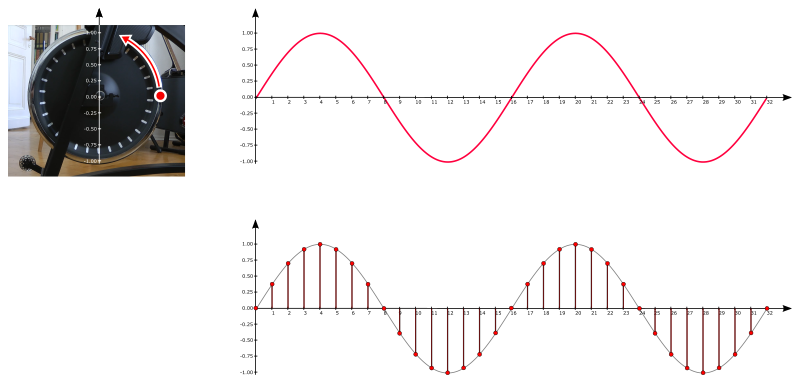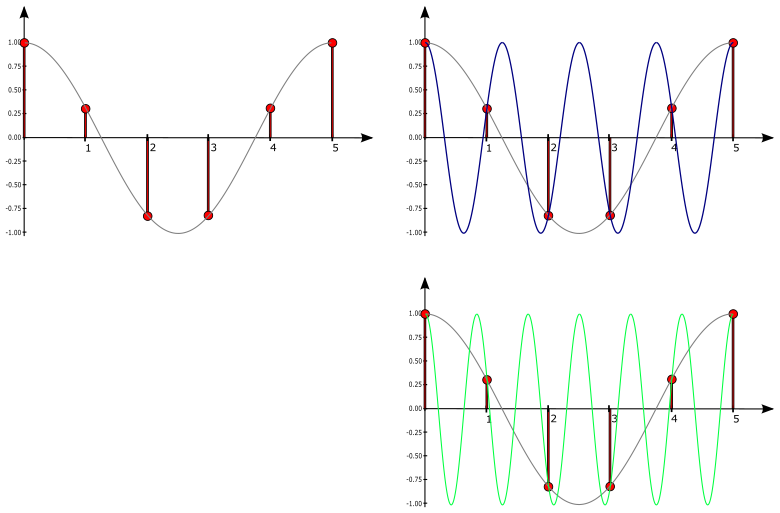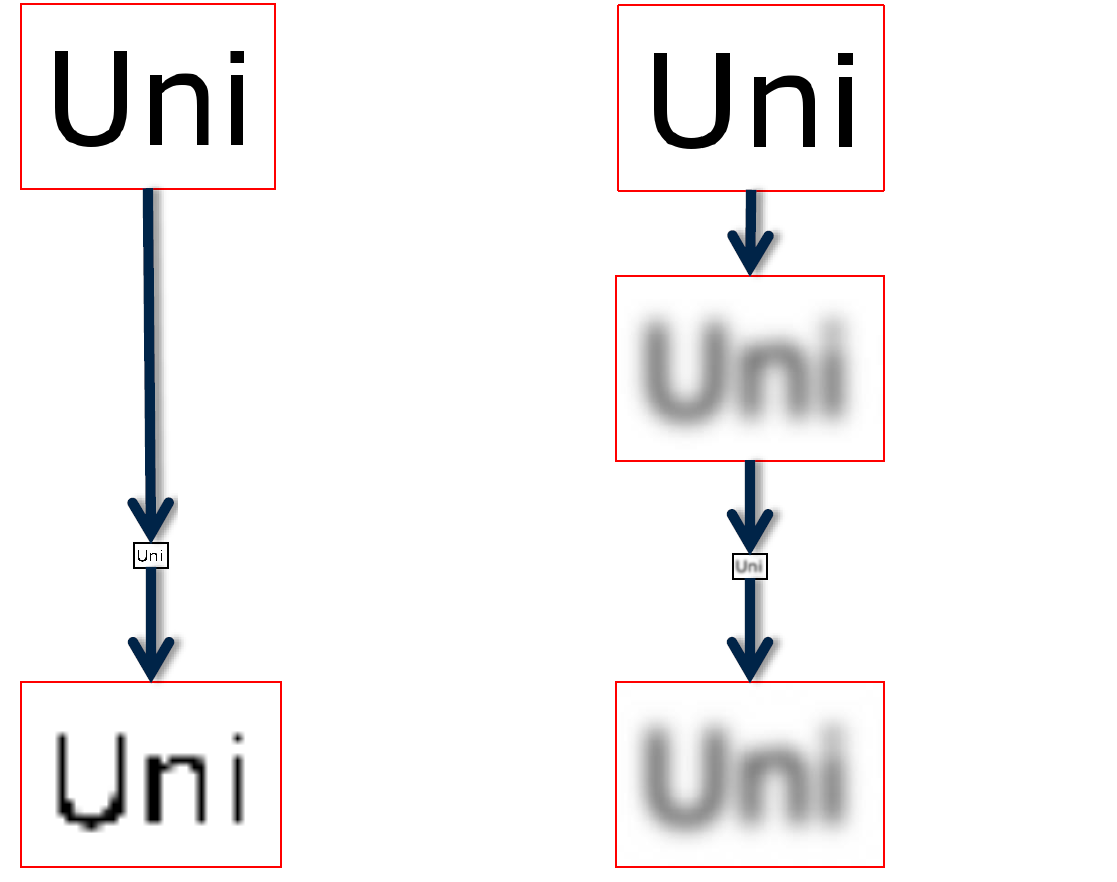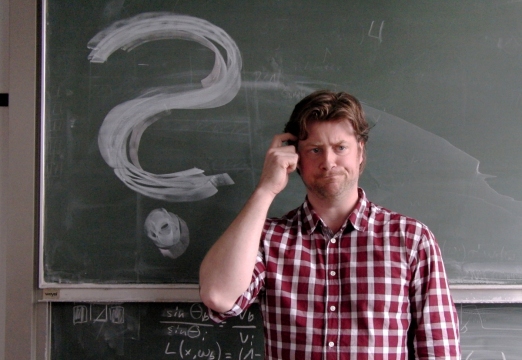Multimedia Signal Processing
Sampling Theorem
Thorsten Thormählen
June 4, 2023
Part 3, Chapter 3
Thorsten Thormählen
June 4, 2023
Part 3, Chapter 3
This is the print version of the slides.
Advance slides with the → key or
by clicking on the right border of the slide
Slides can also be advanced by clicking on the left or right border of the slide.
| Type | Font | Examples |
|---|---|---|
| Variables (scalars) | italics | $a, b, x, y$ |
| Functions | upright | $\mathrm{f}, \mathrm{g}(x), \mathrm{max}(x)$ |
| Vectors | bold, elements row-wise | $\mathbf{a}, \mathbf{b}= \begin{pmatrix}x\\y\end{pmatrix} = (x, y)^\top,$ $\mathbf{B}=(x, y, z)^\top$ |
| Matrices | Typewriter | $\mathtt{A}, \mathtt{B}= \begin{bmatrix}a & b\\c & d\end{bmatrix}$ |
| Sets | calligraphic | $\mathcal{A}, B=\{a, b\}, b \in \mathcal{B}$ |
| Number systems, Coordinate spaces | double-struck | $\mathbb{N}, \mathbb{Z}, \mathbb{R}^2, \mathbb{R}^3$ |






Spectrum of the sampled input signal: $\mathrm{X}_a(f) = \sum\limits_{k=-\infty}^{+\infty} \mathrm{X}(f - k \,F_a)$



Ideal low-pass filter: $\mathrm{H}(f) = \begin{cases} 1 & \,\,:\,\, |f| < F_{\mathrm{max}} \\ 0.5 & \,\,:\,\, |f| = F_{\mathrm{max}} \\ 0 & \,\,:\,\, |f| > F_{\mathrm{max}} \\ \end{cases}$
$\begin{array}{lll} \mathrm{X}_r(f) &=& \mathrm{H}(f) \, \mathrm{X}_a(f)\\ &=& \mathrm{H}(f) \, \sum\limits_{k=-\infty}^{+\infty} \mathrm{X}(f - k \,F_a)\\ &=& \sum\limits_{k=-\infty}^{+\infty} \mathrm{H}(f) \, \mathrm{X}(f - k \,F_a)\\ &=& \mathrm{X}(f) \quad \mathrm{wenn} \quad F_a > 2 \,F_{\mathrm{max}} \end{array}$

Aliasing effect: If the sampling theorem is violated, additional frequencies can appear that may not have been present in the original spectrum


Please notify me by e-mail if you have questions, suggestions for improvement, or found typos: Contact